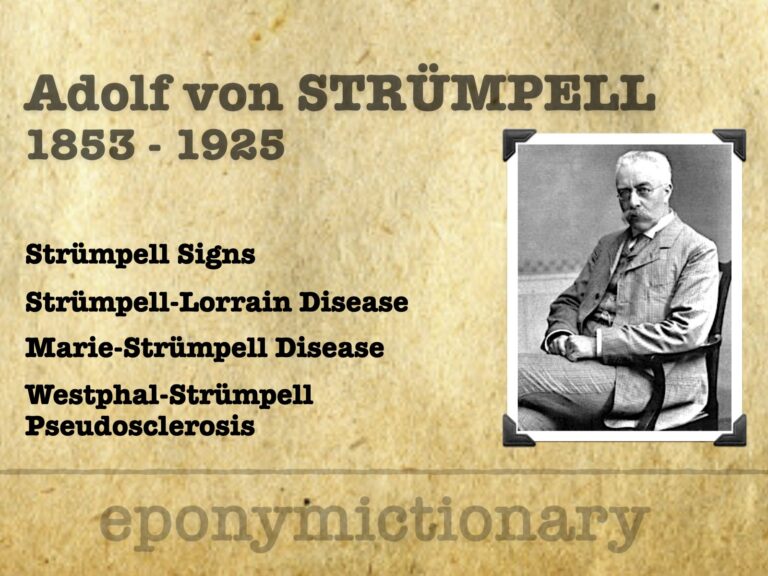
Adolf von Strümpell
Ernst Adolf Gustav Gottfried von Strümpell (1853-1925) was a German neurologist. Strümpell signs, Strümpell-Lorrain disease, Marie-Strümpell disease and Westphal-Strümpell pseudosclerosis.

Ernst Adolf Gustav Gottfried von Strümpell (1853-1925) was a German neurologist. Strümpell signs, Strümpell-Lorrain disease, Marie-Strümpell disease and Westphal-Strümpell pseudosclerosis.
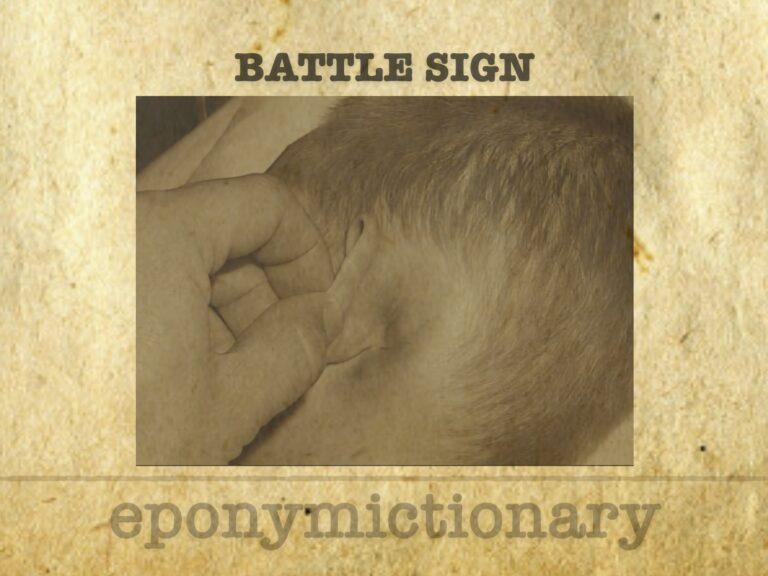
Battle sign: mastoid ecchymosis indicating basilar skull fracture, described by W.H. Battle in 1890; it holds >75% PPV for posterior fossa injury.

William Henry Battle (1855–1936) English surgeon. Battle incision, Battle operation and Battle sign postauricular (mastoid) ecchymosis

Carl Gerhardt (1833–1902), German internist and paediatric pioneer, described Gerhardt’s sign and advanced diagnostics, paediatrics, and laryngology
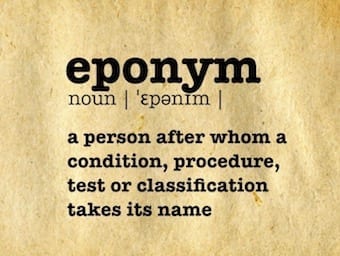
Eugen Julius Karl Paul Alfred Stieda (1869 – 1945) was a German Surgeon. Eponym: The Stieda fracture, Stieda tubercle and Pellegrini-Stieda disease (1908)

Libman–Sacks endocarditis is a sterile cardiac valve lesion linked to lupus and antiphospholipid syndrome, often detected via echocardiography

Benjamin Sacks (1896–1971), cardiac pathologist and co-describer of Libman–Sacks endocarditis, also a Hollywood advisor and Arizona frontier historian.

Sidney Yankauer (1872–1932), American ENT surgeon and inventor of the Yankauer suction catheter, pioneer in bronchoscopy and surgical airway care

Adolphe-Marie Gubler (1821-1879) was a French physician and therapeutic pharmacologist. Millard-Gubler syndrome (1856)
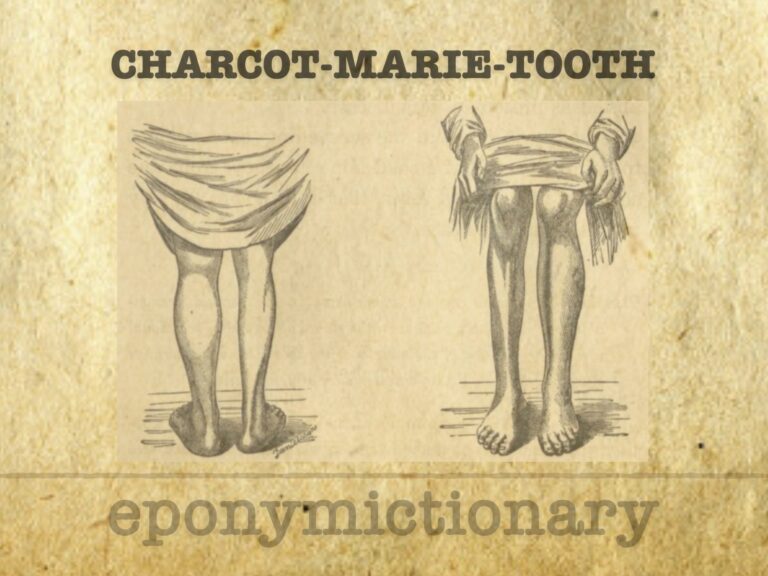
Charcot–Marie–Tooth disease (CMT) is the most common inherited neuropathy, encompassing genetically diverse subtypes of peripheral nerve dysfunction.
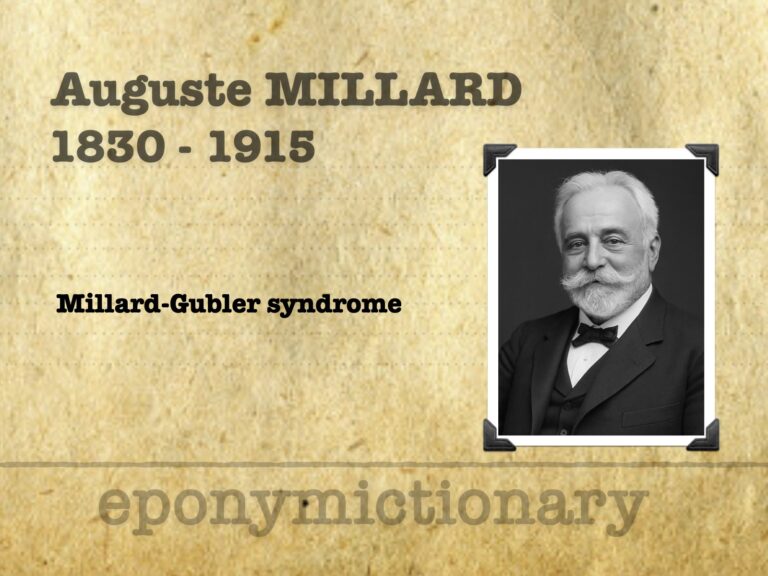
Auguste Louis Jules Millard (1830-1915) was a French physician. Millard-Gubler syndrome (1856). Master educator and physician

Common viral illness in infants caused by HHV-6. Roseola presents with high fever followed by sudden rash; also known as sixth disease or exanthem subitum.